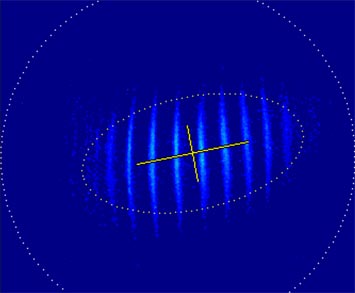Taking Advantage of Microbunching Instability: A Breakthrough in Accelerator Design
August 9, 2013
So-called “microbunching instability” is identified as one of the most serious challenges to overcome in developing the next generation of light sources. This problem occurs when microstructures develop inside bunches of accelerating electrons, causing beam loss or degradation of beam quality. Now, for the first time, accelerator physicists at Brookhaven National Laboratory have tackled this common problem in accelerator design and opened the way to improving accelerator performance significantly.
The team did precise experiments to characterize microbunching instability and, with greater understanding of the phenomenon, showed that this instability can be used constructively to control electron bunch shape. Their paper reporting on the work was published on July 19, 2013, in Physical Review Letters, listing authors Sergei Seletskiy; Boris Podobedov; Yuzhen Shen, now with the U.S. Patent and Trademark Office; and Xi Yang.
“This is totally new,” said Podobedov. He explained that there have been some developments in addressing the problem of microbunching, but “for the first time, we systematically characterized the microbunching instability and compared our measurements to the theory.” The team is also the first to use microbunching instability to increase considerably both the charge and the modulation frequency of the electron beam, while keeping the beam completely split into sub-bunches and controlling both the number of sub-bunches and the distance between them.
“Our work provides the foundation for enhancing the performance of novel sources of terahertz light based on linear accelerators,” said Seletskiy. “It also shows that, with a specific set-up, free electron lasers can actually benefit from microbunching instability.”
He added, “It would be very interesting to take this phenomena that is known to diminish the quality of the electron beam in linear accelerators and use it instead to the advantage of linac-based light sources.”
The authors describe their findings in the paper “Seeding, Controlling, and Benefiting from the Microbunching Instability,” published in Physical Review Letters on July 19, 2013. Their work was funded in part by the U.S. Department of Energy.
2013-4210 | INT/EXT | Newsroom










